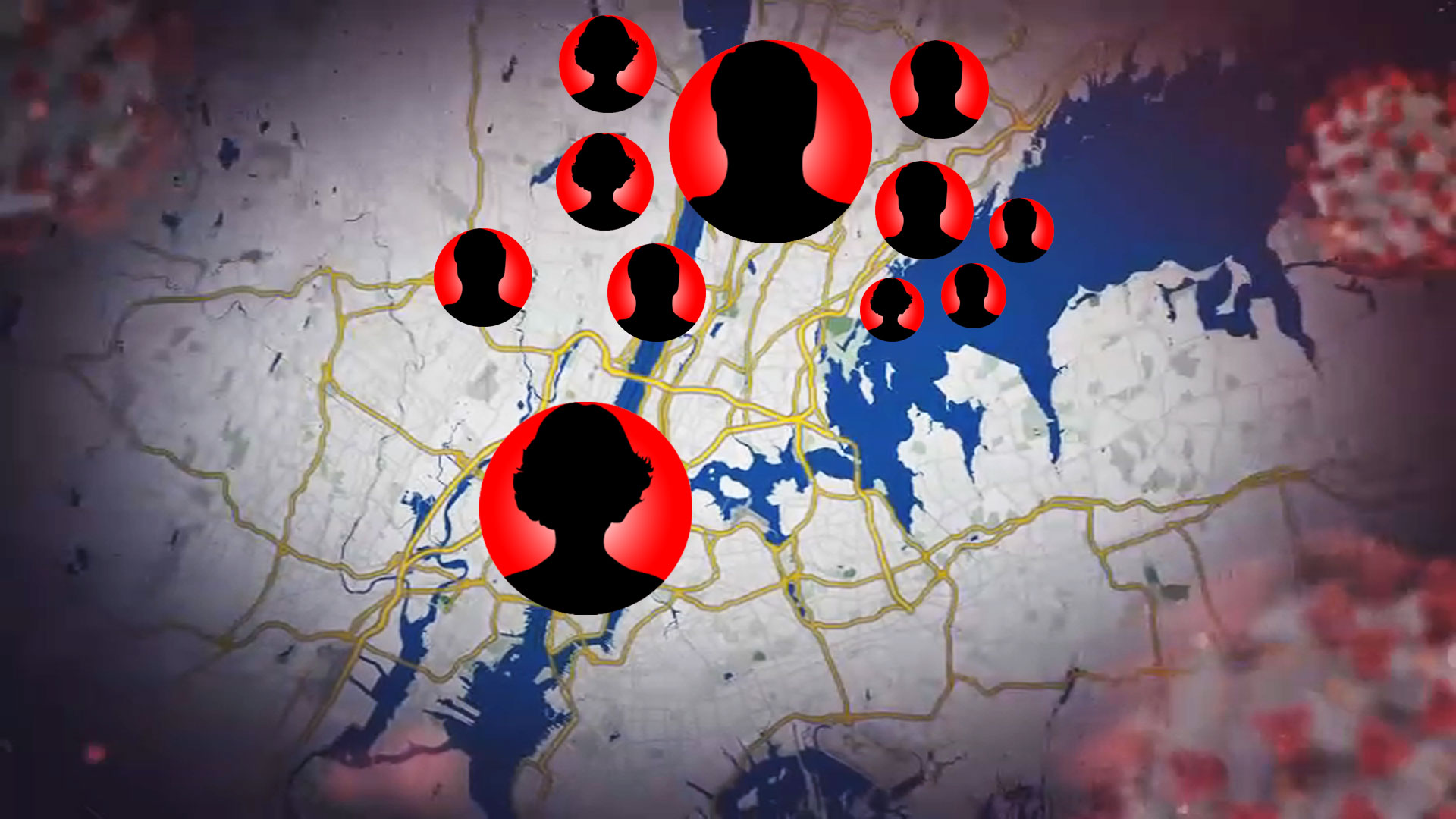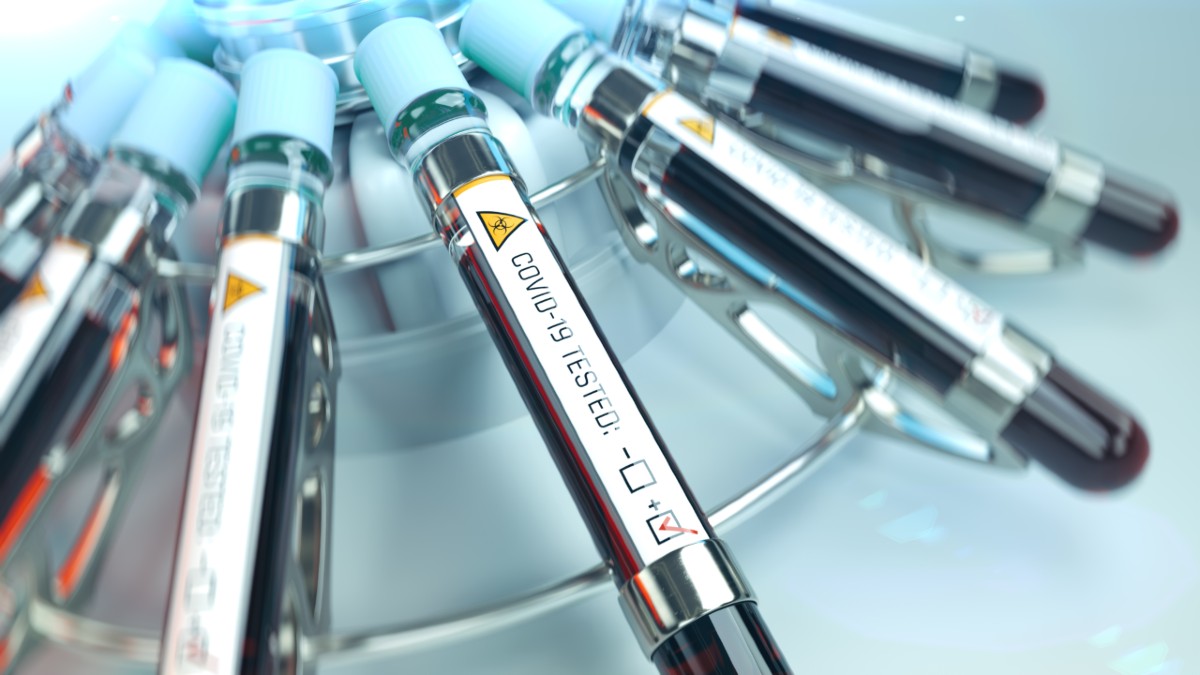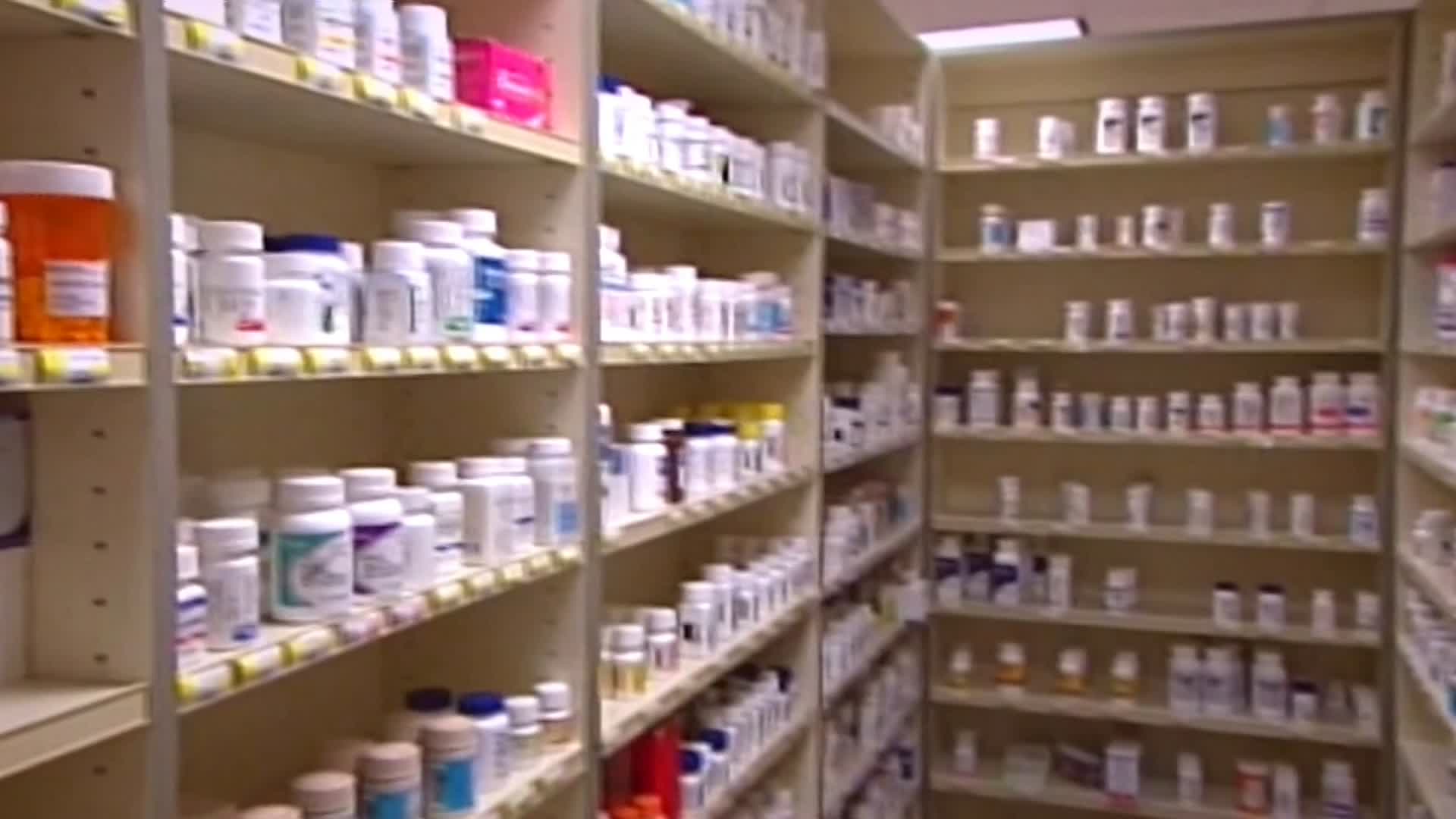What to Know
- Gov. Andrew Cuomo extended New York State's "PAUSE" directive requiring all non-essential employees to work from home until April 15; he warned NYC parks could be shut down soon if social distancing protocols aren't followed more strictly
- President Donald Trump extended the voluntary national shutdown for a month as sickness and death from the coronavirus pandemic rise; his top experts say the U.S. could ultimately see 100-200k COVID-19 fatalities
- More than 87,000 in the tri-state have now tested positive for COVID-19; at least 1,576 people have died, including the first child in NYC
New York City has reported its first death of a child to COVID-19, one of hundreds new state fatalities overnight that brought the grim toll to 1,342 by Monday evening, officials said.
The age of the minor wasn't released, but the victim did have an underlying condition. The sobering news comes as the city's health commissioner warns the upcoming month could be even deadlier than this one -- and Gov. Andrew Cuomo races to shore up defenses before the worst of the storm.
"If there was ever a moment for unity, this is the moment. This virus doesn't discriminate. It attacks everyone, and it attacks everywhere," Cuomo said at his daily briefing Monday. "This virus has been ahead of us from Day 1. I'm tired of playing catch-up with this virus. You never win when you're playing catch-up. If you are not prepared for the apex, for the high point, you are missing the point of the operation. It is a fundamental blunder to only prepare for today."
The nation's top experts, infectious disease specialist Dr. Anthony Fauci and Dr. Deborah Birx, the White House Coronavirus Task Force response coordinator, say it's likely the United States could see at least 100,000 deaths by the time the pandemic ebbs. It could be double that, even. By way of comparison, the 2018-19 U.S. flu season claimed 34,200 lives, per the CDC. A "bad flu season" the year before killed nearly double that number, Fauci said.
This outbreak "is clearly worse than that," he told CNN Monday.
New York is the epicenter of it, accounting for more than 40 percent of all deaths nationwide and nearly half of the country's cases to date. As of Monday, the state had 68,363 cases, nearly 9,000 of them new, and 1,342 deaths; the lion's share of both are in New York City, which had more than 38,000 cases and 914 deaths. Most of the city's patients are younger than 50 -- 42 percent of the total cases as of Monday were people 18 to 44.
But the vast majority (70 percent) of the fatalities have been people older than 65 — and those who died have overwhelmingly (more than 98 percent) had underlying conditions or potential underlying conditions.
Asked about projections for how many New Yorkers could be lost by the time the crisis ends, Cuomo said Monday his team doesn't forecast COVID-19 like that.
"We've lost more than 1,000 New Yorkers," the governor said. "To me, we're beyond 'staggering' already. We've reached 'staggering.' The point is to save every life that you can, that's what this is all about."
Tracking Coronavirus in Tri-State
New Jersey and Connecticut have seen their numbers rise accordingly. Gov. Phil Murphy said his state added more than 3,300 cases overnight, bringing its total to 16,636 as of Monday. He also said another 37 people had died, bringing the toll in New Jersey to 198. Connecticut has been battling a rapid increase in its numbers as well, tallying 2,571 cases and 36 deaths.
Regionally, there have been more than 87,000 positive cases and 1,576 deaths. All three states have had major disaster declarations approved by President Trump, opening up billions of dollars in urgently needed funding and assistance.
How Coronavirus Has Grown in Each State — in 1 Chart
New York has quickly become the epicenter of the American coronavirus outbreak. This chart shows the cumulative number of cases per state by number of days since the 10th case.
Source: Johns Hopkins University
Credit: Amy O’Kruk/NBC
New York's front lines are getting reinforcements, with the new 2,500-bed field hospital at the Javits Center opening Monday and a 1,000-bed, 1,200-staff U.S. Navy ship arriving in Manhattan to help care for non-coronavirus patients. Meanwhile Cuomo will get to work on four new presidentially approved field hospitals in the other five boroughs, including 600 beds at a nursing home in Brooklyn, as Mayor Bill de Blasio aims to have his new 68-bed facility in Central Park up and running by Tuesday.
The support, even to help shoulder the non-viral patient load, is sorely needed so hospitals can make room for the ongoing wave of COVID-19 patients. Hospitalizations are doubling every six days now, an encouraging sign from the every-two-day rate New York saw about a week ago, Cuomo said Monday. But actual hospitalizations did increase Saturday into Sunday and again into Monday -- and the governor has said the overall numbers are higher than initially projected.
As of Monday, more than 9,500 people were hospitalized with COVID-19, about 14 percent of the state's cases. Nearly a quarter of those who were hospitalized were in the ICU. Those patients need ventilators -- and hospitals and nurses say they are on them for 20 to 30 days at a time, far more than the two to three days non-COVID-19 patients typically spend on the life-saving machines. Another 632 people were discharged from hospitals from Sunday to Monday, down slightly from a high around 846 the day before, Cuomo said.
The head of surgery at New York Presbyterian said that the hospital had increased its ICU to approximately 1,100 beds — nearly tripling its usual amount of 400. Even with the expansion, the hospital will also start operating on a "triage" system, Dr. Craig Smith said, with the goal of "relieving pressure on inpatient beds." To do this, some COVID-19 patients will be sent home with oxygen, an oxygen saturation monitor and instructions to follow up every 12-24 hours either over the phone or online.
How to Get a Coronavirus Test
Race Against Time
Cuomo and de Blasio have said New York hospitals and medical staff have enough equipment and supplies for "right now." But that literally means "right now" -- and "right now" gets more taxing with each day.
De Blasio said he can't guarantee city hospitals have enough to last past April 5, though he says the city has distributed nearly 10 million masks, 180,000 face shields, 1.5 million surgical gloves and more to date. The federal government has helped add more ventilators and other supplies to the stockpile, though Trump has questioned how some are being used and whether New York needs the volume of items it continues to request.
To the latter, Cuomo and de Blasio have repeatedly said the answer is a resounding yes. They want to be as prepared as possible, which still may not be prepared enough, when the wave crashes on the already overwhelmed hospital system -- and they're modeling off the data.
"If you wait to prepare for the storm to hit, it is too late. You have to prepare before the storm hits. In this case, the storm is when you hit that apex," Cuomo said Monday. "How do you know when you hit that apex? You don't. There is no crystal ball. Follow the data -- and that's what we're doing here in New York."
The president reiterated his unfounded claim on Monday that face masks were being taken by hospital employees. He said he was told that a specific New York hospital usually goes through between 10,000 and 20,000 masks in a certain amount of time, but now there are 300,000 masks getting taken in that some time span.
De Blasio took affront to Trump's allegation that masks are going out the back door: "It's insulting, it's outrageous, it's incredibly insensitive right now to people who are giving their all. I don't know what the president's talking about."
He also said Monday he had just asked Trump for another 400 ventilators. In a Rose Garden press conference, the president said he was sending a new sterilization tool for N95 masks to New York, which can clean each individual mask up to 20 times.
To further supplement the city's stockpile, Cuomo has sent supplies from the state. The governor says different areas will see the "apex" hit at different times. New York City is first, he said. After that, cases in Westchester County and upstate could spike; he says he'll redistribute resources as needed.
De Blasio said Monday that he'd also redirect resources as needed, to hotspots elsewhere in the state and America, once the city gets past its own crisis peak.
"I affirm to you NYC will stand firm for the rest of our nation," the mayor said. "We will send the ventilators, the supplies. We will ask our doctors nurses to go to the front. Because our country was there for us, we will be there for our country."
Assessments on personal protective equipment (PPE) and other supplies are done multiple times daily. Murphy said over the weekend that he would require New Jersey health care facilities to report “daily data” on their PPE inventory, their bed capacity and their ventilator inventory. The state is getting an influx of federal PPE and 300 ventilators to boost supply, Murphy said Monday.
He wants more, and said, "I will not stop until we get the support we need."
New Jersey is partnering with the U.S. Army Corps of Engineers on three field hospitals across the state to add another 1,000 beds. Murphy said he's working to reopen closed hospitals to add another 1,300 beds as well, saying, "We will do everything we can to get the beds we need."
Connecticut is looking for more beds as well, also with the help of the U.S. Army Corps of Engineers. The Mohegan Sun resort and the Connecticut Convention Center in Hartford are two possible expansion sites. The federal government was also sending 50 ventilators to the state, Trump said Monday.
Congress' $2.2 trillion relief package will provide some help, but it won't be able to buy hospitals out of shortages. And the race to acquire equipment underscores that. But as much as states are targeting critical supplies, they are acutely focusing on buttressing the battle-weary medical staff on the front lines who say their fight gets more physically and emotionally challenging daily.
As one doctor told NBC News, "Every time I leave from a shift, I cry. Each shift. Every shift I work I have cried after leaving...because of the pain and suffering we see and the amount of exposure that myself and my nurses as well as my doctors (experience)."
In New York City, hospital staffs have been moved around in an effort to address shortages at different locations. More than 60 clinicians (including RNs, nurse practitioners, physicians and physician assistants) have been sent to help with the influx of patients at Elmhurst Hospital, along with 40 ventilators. On Saturday, more than 100 additional nurses were reassigned to the fatigued hospital.
Cuomo, Murphy and Connecticut Gov. Ned Lamont have all called on legions of retirees to help answer the call on the front lines. Tens of thousands have stepped up to date. In New York, at least 76,000 medical professionals, from physicians to RNS and respiratory therapists, have signed up to come back to work. More than 10,000 mental health professionals have volunteered to answer calls on the state's new hotline.
On the other side of the spectrum, NYU says it will graduate its medical students early to help shoulder the load. Rutgers said this weekend it would do the same.
Serious on Social Distancing
Flatten the curve, save lives: it's the phrase we keep hearing from local leaders and seeing on highway and other signs in every state. Testing is a huge component of that, and Cuomo recently announced a new mobile testing site in the Bronx to boost his already aggressive testing infrastructure. But he can only do so much -- people have to stay home, and when they're out, stay apart.
Starting Monday, the NYPD will spot-check subway cars to make sure New Yorkers are following social distancing guidelines, according to de Blasio. He said those who refuse to practice the 6 feet apart order could be fined anywhere between $250 and $500. (That comes even as more than 5,000 cops called out sick for one reason or another.)
The mayor says he wants to keep playgrounds open, but he says he will reevaluate if the city sees a pattern of non-compliance over several days.
Cuomo in no uncertain terms said Monday a decision to shut down city parks could be imminent, insisting the level of density was still unacceptable. Go to the park if you want to go to the park, he said -- but not a spot already populated.
"I don't know how many different ways to make the same point: New York City parks. We made the point -- you want to go to the park go to the park but not in a dense area, not in playgrounds, where you're playing basketball with other people," Cuomo said. "And I have said that. New York City is trying to reduce the density in those playgrounds. Thus far, they have not been successful. If that continues we'll take a mandatory action to close down playgrounds."
The governor extended his statewide "PAUSE" directive Sunday another two weeks to help control density, while Trump extended the White House guidelines on social distancing through the end of April, which is notably after Easter -- the date Trump had said he wanted to have the country "raring to go."
"None of us felt that 15 days was adequate," Fauci told ABC Monday about the president's decision to extend the guidelines through the end of April. He said he didn't think they would need to be extended beyond that, but noted, "there’s always that possibility, depending upon the efficiency and the effectiveness of the mitigation methods.”
Asked Monday on "TODAY" whether she thought social distancing efforts were working, Birx said she thinks “some of the metro areas were late” in getting the public on board. She urged continued hand washing, strict social distancing and said, by rule, the public should assume even nonsymptomatic people were infected. It's critical everyone engage in these measures, Birx said, adding the White House isn't sure "all of America is responding in a uniform way."
Cuomo has made uniform action a cornerstone of his COVID-19 response. He and other governors developed a tri-state coalition to create and enforce regional directives; he has partnered with de Blasio on statewide standards as well.
Murphy has said he doesn't envision a scenario where the current restrictions would be lifted prior to May -- and he said Monday that if social distancing hadn't been implemented, the predicament would be far worse.
The economic impact at all levels has been dizzying. To help ease the burden on individuals who have lost their jobs or can't go to work, Murphy announced a 90-day grace period for mortgages. He also suspended commercial and residential evictions. Cuomo has announced similar policies; in the city, de Blasio has called for a rent freeze for 2.3 million tenants in nearly one million rent-stabilized units amid the COVID-19 pandemic.
Cuomo says some people can go back to work now -- he says the state, and America, can restart the economy in a "smart way" while still prioritizing public health. He said Sunday in his view it all comes down to the scale of testing. If you can develop a new, faster and easier home-based program that can test millions of people every day -- and rapidly, you will identify hundreds of thousands of people who "can go back to work tomorrow."
Fauci says scientists are working on more scaleable, less invasive testing.
Where Do We Go From Here?
Numbers will continue to rise as more people are tested, officials say. New York has accounted for about 25 percent of all COVID-19 testing in America to date, Cuomo has said. That is an accomplishment, he noted: Find the cases, isolate the positives and treat them. That, in conjunction with the social distancing and business restrictions in place, will curb the spread of infection.
Governors are working to accelerate action on the drug front as well. New York launched a clinical trial for an experimental treatment and plans to be the nation's first state to try to heal critically ill patients using recovered people's plasma — a process called convalescent plasma that was used during the flu epidemic of 1918. Right now, everything is on the table.
Responding to the Crisis
The depths of the outbreak — and its impact — are incomprehensible at this point but most definitely catastrophic: Billions upon billions of dollars have been lost and more will be lost; many have died, far more have been sickened. Trump signed three stimulus bills in three weeks, the latest worth $2.2 trillion - and de Blasio said Sunday it's already not enough.
The World Health Organization declared the novel coronavirus a pandemic, the first coronavirus to ever earn the dubious distinction. It's novel — that means it's new and no one has immunity to it.
Nationally, NBC News estimates that more than 160,000 people have been infected and nearly 3,000 have died. Globally, the numbers are far more stark. WHO offered a sobering outlook in a recent situation paper: It took three months to get to the first 100,000 cases and two weeks to get to the next. Then it took just seven days to double again.





